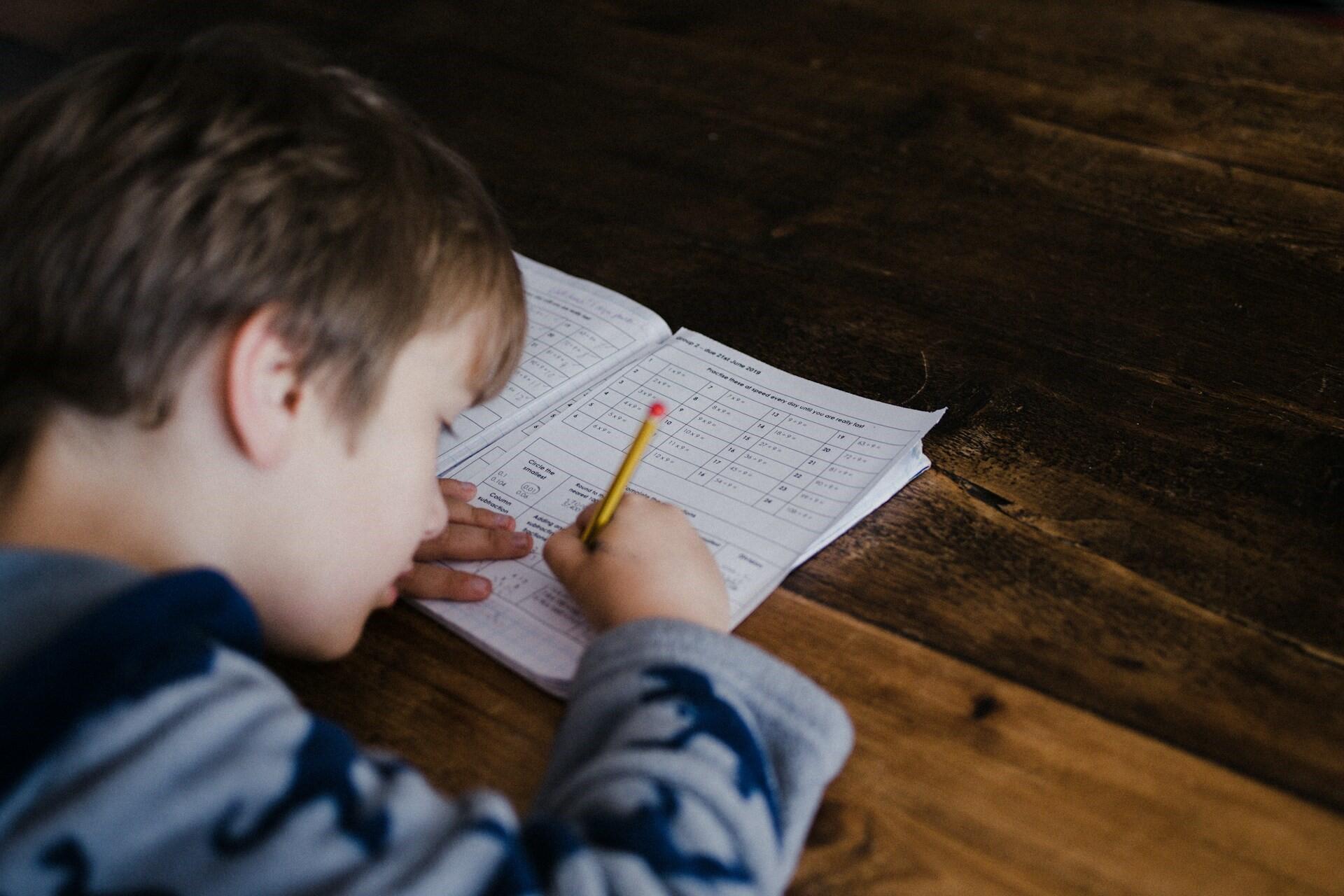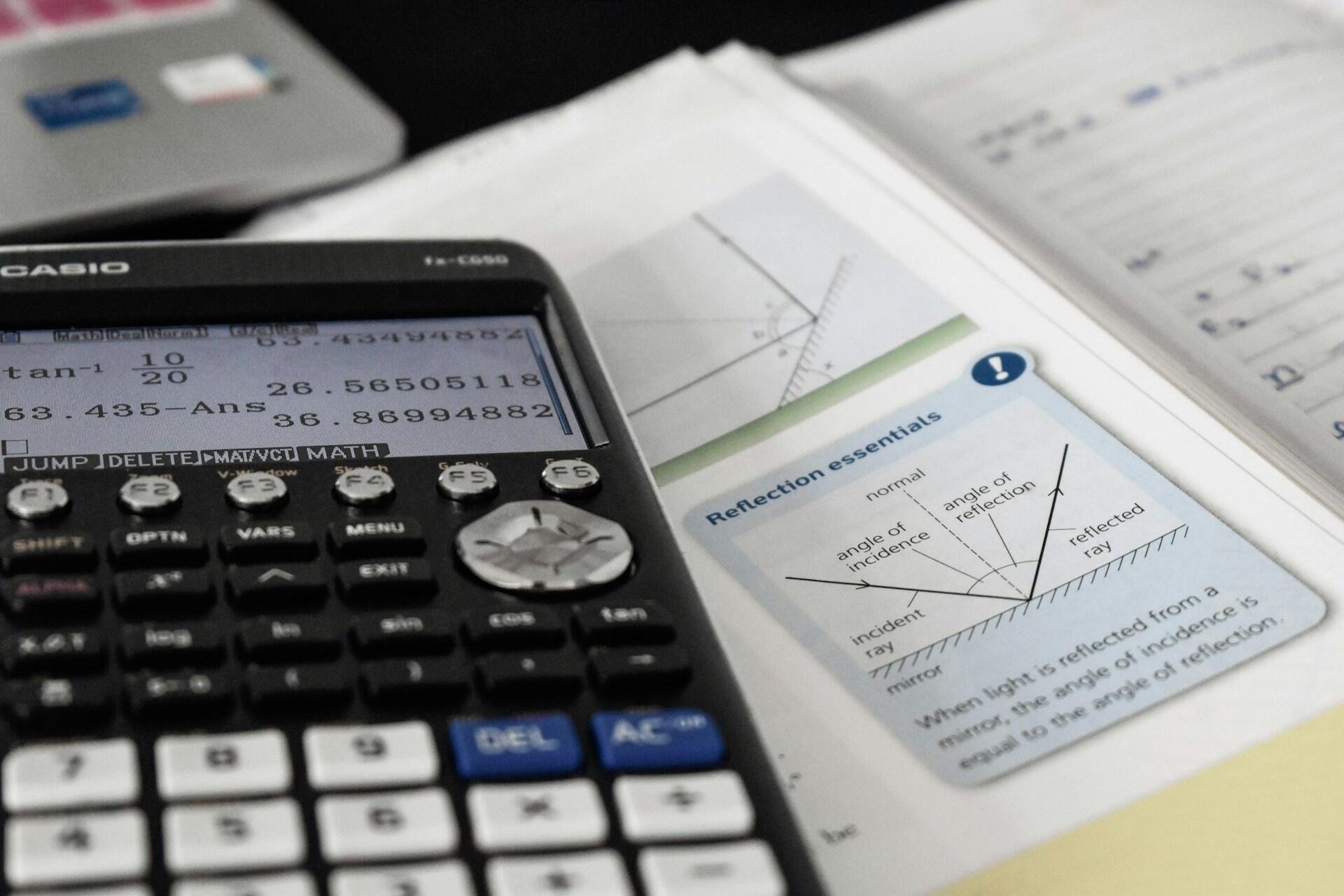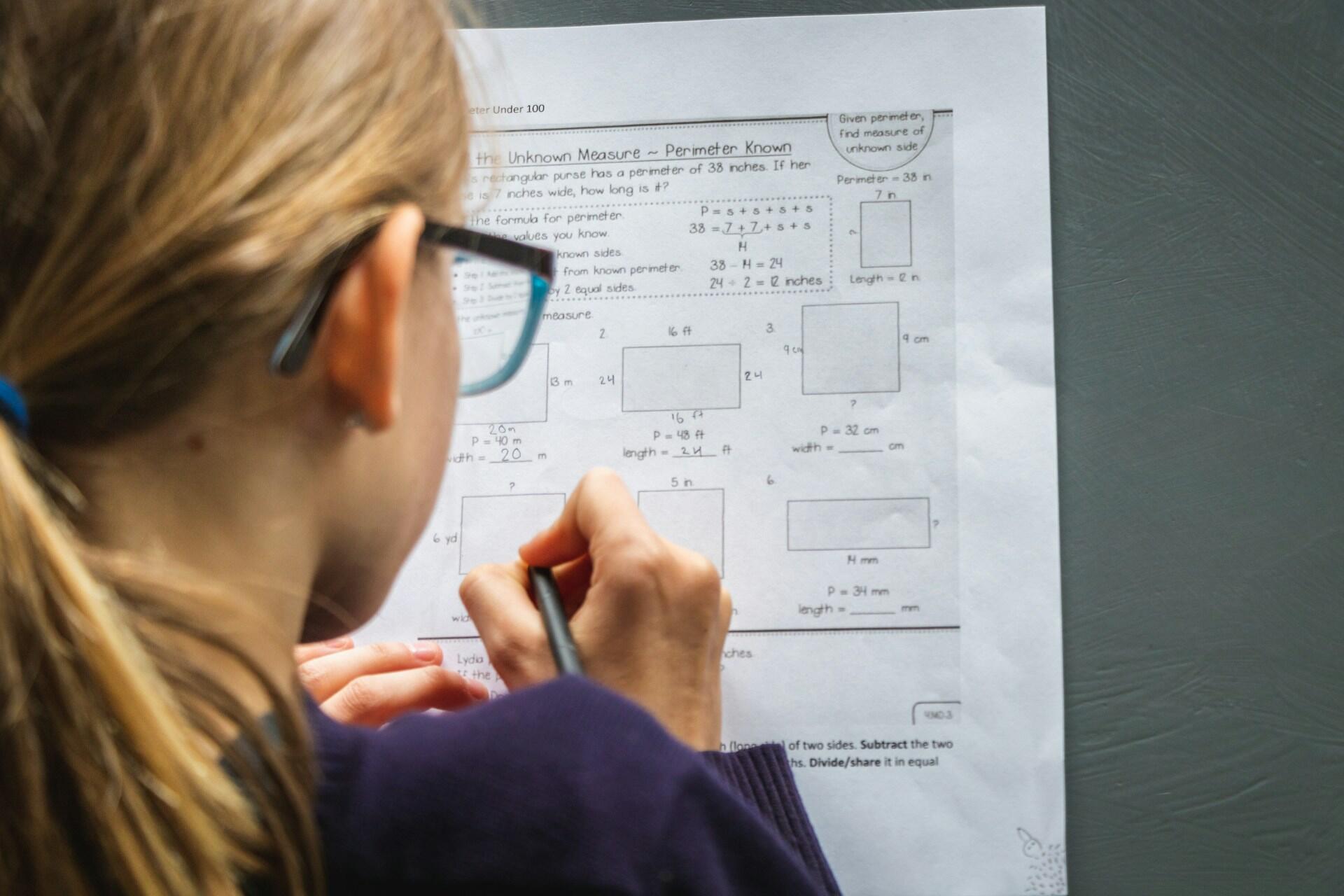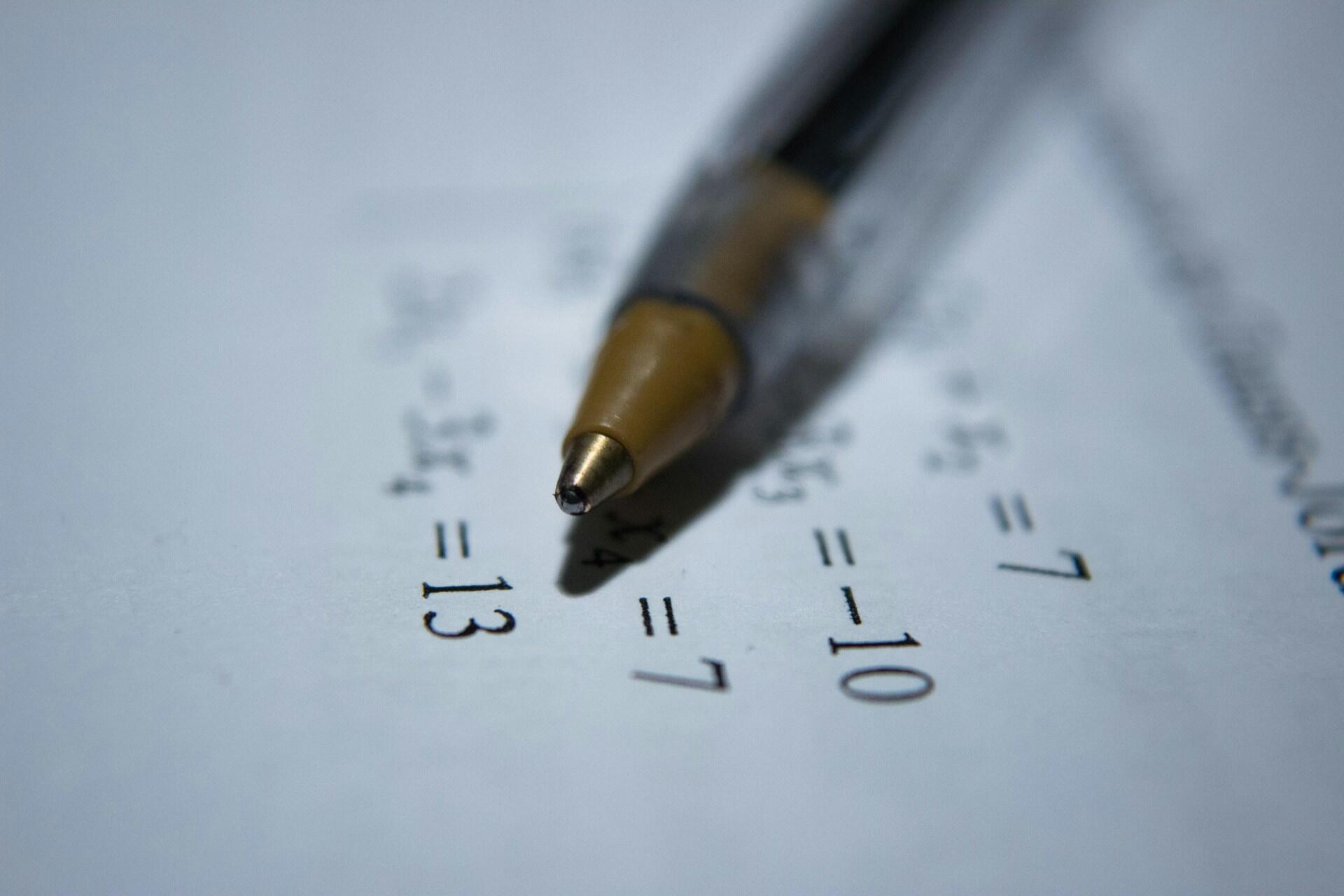So many people find math intimidating. When faced with numbers or formulas they don't immediately understand, they freeze up. However, by arming yourself with a few simple mental math tricks, you can make calculations easier, faster, clearer, and, dare we say it, fun! You can use these for everything from splitting the check to estimating how long a journey will take. Efficiently calculating in your head can save time, sharpen your focus, and make you more confident in math.
| Technique | Description | Example | Use Case |
|---|---|---|---|
| Break Down Numbers | Separate large numbers into smaller, easier chunks for faster addition or subtraction. | 72 + 29 → (70 + 20) + (2 + 9) = 101 | Everyday sums, budgeting, quick mental addition. |
| Using Approximation | Round numbers to the nearest easy multiple to estimate results quickly. | 60 × 120 ≈ 60 × 100 = 6,000 | Time estimates, quick calculations without precision. |
| Recognize Patterns | Spot recurring number relationships to predict results and save time. | Multiples of 3 → 3, 6, 9, 12, 15… | Times tables, pattern spotting, number sense building. |
| Write Down the Pattern | Visualize and record series to strengthen memory of recurring results. | 9 + 1 = 10, 19 + 1 = 20, 29 + 1 = 30 | Study reinforcement, habit formation. |
| Turn Numbers into Shapes or Objects | Visualize digits as shapes or objects to help recall and calculate. | Imagine 'blocks' of 5, 10, or 50 while adding totals. | Visual learners, memory training. |
| Look at the Last Digit | Use divisibility rules to identify quick factors of numbers. | 28 → divisible by 2; 55 → divisible by 5 | Checking divisibility, simplifying fractions. |
| Multiplying by 11 | Add the digits and place the sum between them. | 32 × 11 → 3 (3+2) 2 → 352 | Rapid multiplication trick. |
| Squaring Numbers Ending in 5 | Multiply first digit(s) by the next higher number, then add '25.' | 65² = (6×7) + 25 = 4225 | Memorising squares, quick power calculation. |
| Estimating Square Roots | Find the two nearest perfect squares to gauge the root. | √50 between 7 and 8 → ≈7.1 | Quick checks, mental estimation. |
| Butterfly Fractions | Cross-multiply to add or subtract fractions without common denominators. | 3/4 + 2/5 → (15 + 8)/20 = 23/20 | Fraction operations in your head. |
| Percentage Shortcuts | Break percentages into 10% and 5% parts for easy mental totals. | 15% of 80 = 8 + 4 = 12 | Tips, discounts, everyday money calculations. |
Having trouble finding a teacher near you? Try an online math tutor.

Learn How to Calculate Quickly
The first step is to make mental arithmetic practice a regular habit if you want fast improvement. With repetition, your brain will develop a natural, intuitive sense of all the calculations. You need a notebook and perhaps an exercise book to help you practice mental arithmetic. This way, you will keep a record of every trick you've used, the mental progress you're making, and how fast you're going. Here is a list of basic tools to boost your skills:
Break Down Numbers
It's impossible to become an extraordinary mathematician who can add, subtract, multiply, or divide complicated numbers in their head at once. To get better at math, you must take it easy! Write down all of the calculations you need. Some students who are learning math find it easier to solve calculations or problems when they can visualize them on paper.

Using Approximation
Learning and practicing calculations with an approximation is a good way to improve your mental arithmetic skills. If you need to know what 60 x 120 is, try multiplying the first number by 100 (a much simpler calculation) and then working from there. With this, you will know approximately how many digits the final number should have.
Learning to estimate quickly isn’t about getting a perfect answer; it’s about building intuition. The more often you round and reason through everyday sums, the faster your brain recognizes numerical relationships. Try mentally calculating bills, discounts, or travel times to strengthen your reflexes.
Recognize Patterns
Recognizing patterns is an excellent way to improve mental math. When you spot familiar sequences, you can start predicting results. You'll see that repetition builds a sense of rhythm, and you'll begin to skip individual steps. Practice with number families like multiples of 3, square numbers, or even-number doubles. This will help your brain to start linking answers, and once these patterns feel natural, you'll get much quicker at solving new problems.
Write Down the Pattern
It can be useful for certain types of learners to write down patterns so they can see how numbers behave. By recording simple series of sums, you can strengthen your visual memory. As you study, start highlighting relationships. When you see progressions like 5 being half of multiplying by 10 or how adding 9 is simply adding 10 and subtracting 1, it's much easier to remember them if you wrote them down.
Turn Numbers into Shapes or Objects
Another method is to avoid focusing too much on the numbers. Instead of seeing numbers in your head, try imagining the single digits as visual blocks or think of the different parts of the calculations as building blocks. Allocating an image in your head to the sets of numbers can change the way you approach that group of digits. Elementary school teachers and tutors highly recommend these tips and tricks. If these tricks aren't enough, then keep reading to find out how you can improve your mental arithmetic.

Look at the Last Digit
Look at how the number ends. If it’s 0, 2, 4, 5, 6, or 8 you can divide it by 2, 5, or 10. For example, 28 ends with an even number so it’s divisible by 2, while 55 ends with a 5 and is divisible by 5. 260 ends with a 0 so it’s, therefore, divisible by 10.
What about 3 or 9? Add up the digits to find out if the number is divisible by 3 or 9. A number is divisible by 3 if the sum of its digits is equal to a multiple of 3 (e.g.: 18 = 1 + 8 = 9, a multiple of 3).
A number is divisible by 9 if the sum of its digits is equal to a multiple of 9 (e.g.: 936, 9 + 3 + 6 = 18, which is 1 + 8 = 9, which is a multiple of 9). If the sum of the digits is divisible by 3 and an even number, it’s divisible by 6 too. Of course, if you're still struggling, find a reputable math tutor here on Superprof.
Mental Math Tricks
- To add numbers ending in 9, add the next number and then subtract 1. For example, to work out 482+ 39, do 482 + 40 = 522 - 1 = 521.
- The same process to add 11, just add the tens, then add 1. For example, 725 + 11 = 725 + 10 = 735 + 1 = 736.
- Same goes for numbers that end in 1. For example, 668 + 31 = 668 + 30 = 698 + 1 = 699.
Addition
- Deconstruct the numbers.
- For example, 72 + 29 is (70 + 2) + (20 + 9) = (70 + 20) + (2 + 9) = 90 + 11 = 101.
- Or even: 13 + 48 is 13 + (50 - 2) = 63 - 2 = 61.
Subtraction
- Learn to simplify numbers.
- For example, 1958 – 1907. The number 1900 is included in both numbers, so subtract the tens and units, 58 - 7 = 51.
Multiplication
- To multiply by 4 double the number, then double it again. For example, 36 x 4 = 36 x 2 x 2 = 72 x 2 = 144.
- To multiply by 10 all you do is add a 0 to the end of the number. For example, 360 x 10 = 3600.
- When there’s a decimal point, you just have to move the decimal one digit to the right. For example, 52.5 x 10 = 525.
- To multiply by 100 add 2 zeros to the end of the number or move the decimal place 2 digits to the right, etc.
- To multiply by 5, you can multiply by 10 then divide by 2. For example, 224 x 5 = 224 x 10 / 2 = 2240 / 2 = 1120.
The Japanese Method of Multiplication
You don't feel ready to do complicated multiplication in your head? The visual Japanese multiplication technique makes operations much clearer to see. All you have to do is draw lines, and the result appears as if by magic. Learning this method will allow you to carry out calculations in your head easily. Envisioning the lines in your head will help you see the result, too. Watch the method play out here.
Division
Division can be made much simpler by thinking of it as the inverse of multiplication. Rather than asking "how many times does 8 go into 72", you could instead use your knowledge of times tables. This allows you to reverse engineer division problems. When you divide large numbers, you can round them to easy multiples and then adjust your answer. Estimation and pattern recall can help you divide in your head.

Butterfly Fractions
Fractions can produce headaches! To avoid the step of having a common denominator for adding or subtracting fractions, use the butterfly method to do it in your head.
- For example: 3/4 + 2/5
- First do some cross multiplication: 3 x 5 =15 and 4 x 2 = 8
- Then add the two results to get the final numerator, 15 + 8 = 23
- To find the denominator, multiply the two denominators: 4 x 5 =20
- Therefore: 3/4 + 2/5 = 23/20
You can also use this technique to subtract fractions.
Percentage
Calculating percentages can be made easier by breaking them into smaller parts. To find 15% of a number, for example, you can work out 10% by moving the decimal place. You can then find out 5% by halving the 10%. After that, add 10% to 5% and you'll get your result. This is particularly useful for tips, sales, or taxes.

Advanced Techniques
These advanced mental math techniques are how you go beyond everyday calculations. Start working with numbers more flexibly with these methods. They're handy for when you need to do math but don't have a pen, paper, or a calculator. Practice these useful math shortcuts, and you'll begin to recognize patterns and relationships with numbers.
Multiplying by 11
To work out 32 x 11, all you have to do is multiply 32 x 10, then add 32, so 320 + 32 = 352. Do you know the second technique to do it in your head? For the same problem (32 x 11), all you have to do is add the 2 digits of the number being multiplied by 11 and place them between the two numbers. Therefore, 3 + 2 = 5, putting the resulting 5 between the 3 and 2, and we get 352! If the addition results in a two-digit number, like multiplying 56 by 11, the solution is simple. 5 + 6 = 11, we place the second 1 between the 5 and, 6 and we add the second 1 to the 5. We, therefore, get 616.

Squaring Numbers Ending in 5
To square numbers that end in 5, you just have to multiply the first digit or digits by the next higher numbers, then place 25 at the end. For instance, 25² = (2 × 3) followed by 25 → 625. Similarly, 65² = (6 × 7) followed by 25, which gives 4,225. This pattern works because 5 × 5 always equals 25, while the rest follows a predictable multiplication step.
Estimating Square Roots
To estimate a square root, identify the two perfect squares it falls between. For example, √50 lies between √49 (7) and √64 (8), so the answer is just over 7. Guide your guesses by finding the perfect squares. This is useful for giving you a sense of number and to quickly gauge.
Some Extra Advice
- Wisely group numbers before working anything out.
- Put units that make 10 together to make your additions easier.
- Adding or subtracting by 9, 19, or 29 just add or subtract by 10, 20, or 30, before adding or subtracting 1.
- Dividing by a number is the same as multiplying by its reciprocal,
- To add 2 fractions, make sure they have the same denominator.
- Finally, don’t rush math! Practice makes perfect.
Confidence in mental arithmetic comes from steady, deliberate practice. Even short, daily exercises can build lasting skill. Treat mistakes as part of the process since every correction improves your speed and accuracy for next time.
Remember when you were a child and your grandmother told you not to "run before you walk"? You can apply the same to learning math. Pick a learning method you like and stick with it. It will make learning math much easier! Whether you want to improve mental arithmetic for a Monopoly game with friends or to be free of having to use your phone to do math problems and calculations quickly, you should start slowly and take your time. Don’t rush! Rushing usually leads to mistakes and accidentally skipping an essential step that can result in a bad grade in school.
Keep in mind that in math, you have to start slowly, read the problem carefully, deconstruct each problem step by step, and figure out what you need to do and how to do it to find the answer. The best way to find an answer quickly is to ask others for help. A teacher will know how to identify the problem and the approach you’ll need to take. Take your time learning the basics of arithmetic and mathematical theory, and apply them to simple issues. Once you gain confidence, you can increase the difficulty of each exercise. This is how you advance and get better, by following useful math tips to the letter!
Online Resources to Improve Your Mental Arithmetic
The internet is an excellent resource to help you improve your math skills. There are plenty of websites with multiple lessons, quizzes, tests, and exercises.
If you want to get good at math and mental arithmetic, you need to learn the basic principles by heart as well as know the addition and multiplication tables. Train your brain to remember, and everything will become second nature; your mental arithmetic ability will increase exponentially. This, of course, requires time and a personal commitment, but the result is worth the cost because you’ll have these reflexes for the rest of your life.
You will find math in your life more often than you think. All you have to do is figure out a way to have fun while working with numbers. There aren't thousands of ways to get better at math; all you need is to train your mind and practice. This will make you quick with numbers and calculations. The brain is a muscle; therefore, you need to care for it accordingly. There will come a time when you don't even realize how good and fast you've gotten with calculations. The student becomes the teacher! Check for online Math tutor here on Superprof.
















Thanks alot
eish eish Amir salad